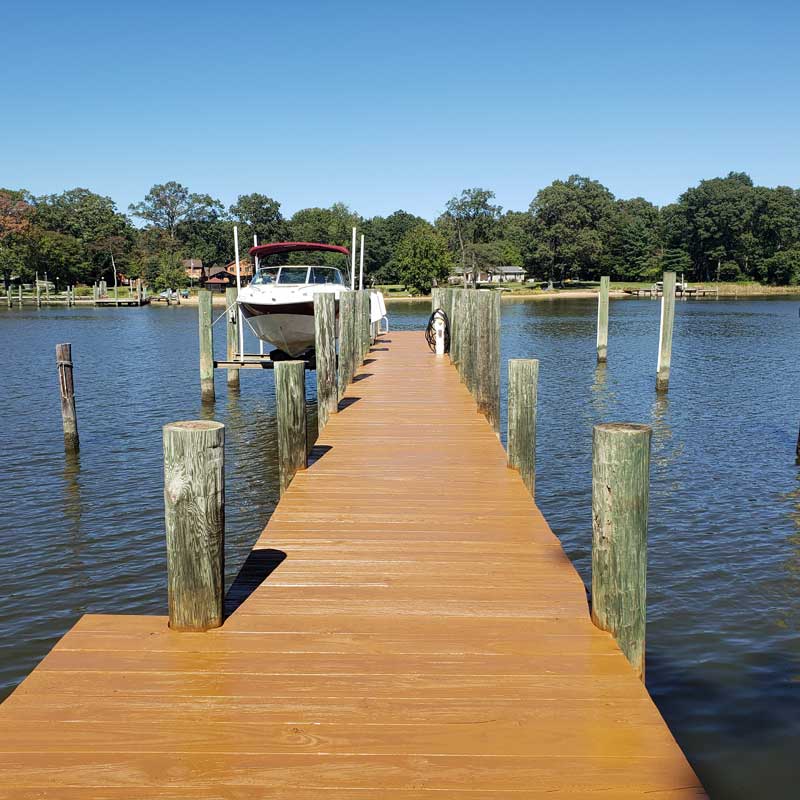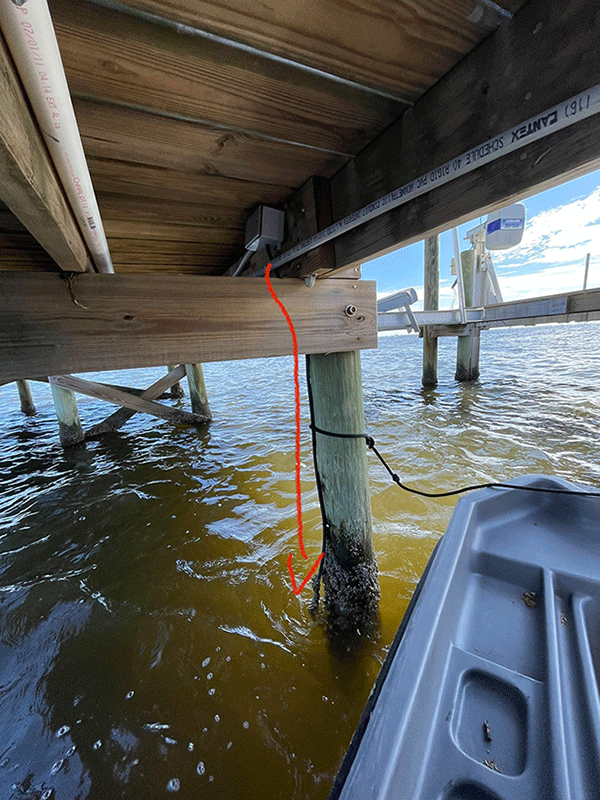How to Address Common Dock Repair Work Issues for Safe Water Activities

Identifying Common Dock Issues
Recognizing usual dock issues is important for keeping the performance and safety and security of your waterfront residential or commercial property. Regular inspections can assist reveal issues prior to they become severe, making sure both the longevity of the dock and the safety of those who utilize it. One widespread issue is rusty or loose bolts. In time, screws, screws, and other fasteners can end up being loosened because of consistent direct exposure to water and weather elements, leading to structural instability.
An additional typical problem is the deterioration of flotation tools. These tools are necessary for maintaining the dock resilient, and any kind of damages or leaks can trigger the dock to listing or sink. Regularly checking for leaks or water logged floats can preempt a lot more substantial problems.
Furthermore, algae and barnacle build-up on the dock's surface can develop unsafe and unsafe conditions. This biofouling not only poses a risk to customers yet can additionally increase the degeneration of the dock products.
Last but not least, examining for indicators of corrosion on steel parts is vital. Corrosion can compromise the stability of the dock's framework, making it unsafe. By consistently determining these common dock problems, you can ensure that your dock stays safe and secure and practical for several years to come.
Repairing Rotting Timber
When resolving the issue of deteriorating wood on your dock, it is critical to act swiftly to stop further degeneration. Begin by completely checking the whole structure to determine all affected areas. Utilize a screwdriver to probe the wood; if it sinks in quickly, the wood is most likely deteriorated and requires immediate interest.
Be sure to cut back to healthy, solid timber, guaranteeing you remove all endangered product. After elimination, treat the remaining timber with a wood preservative to avoid future rot.
Next, change the gotten rid of sections with marine-grade lumber or pressure-treated wood, which are much more immune to water damage. Secure the brand-new items with stainless-steel or galvanized fasteners to stop rust. In addition, using a water resistant sealer to the brand-new wood can offer an additional layer of security.
Safeguarding Loose Boards
How do you guarantee your dock remains practical and secure for all its customers? One crucial facet is safeguarding loosened boards, which can or else position significant threats. Loosened boards not just boost the risk of stumbling but can likewise jeopardize the architectural integrity of the whole dock.

For reinstallation, use stainless or galvanized steel screws, as these products supply exceptional resistance to rust in aquatic settings. Make certain the screws are long sufficient to pass through deep right into the underlying assistance framework, but not as long that they protrude through the dock's surface. Pre-drilling pilot openings can aid prevent the timber from splitting.
Finally, preserve a normal assessment schedule to determine and deal with any type of new problems immediately. By safeguarding loose boards try these out efficiently, you add to the general security and durability of your dock, making it a trusted platform for water tasks.
Stabilizing Unsteady Pilings
Guaranteeing the stability of unsteady pilings is vital to maintaining a secure and practical dock. Make use of a degree to check for vertical alignment and guarantee they are driven deep sufficient into the substratum to offer adequate assistance.
If the pilings are found to be unstable, one effective approach for reinforcement is using additional supporting. Cross-bracing with dealt with lumber or galvanized metal can dramatically boost security. Support the dental braces securely to both the pilings and the dock framework to distribute lots equally.

Routine upkeep and regular reassessment of the pilings' security are important to ensuring lasting dock safety and security and functionality.
Changing Rusty Equipment
Addressing unstable pilings is just one aspect of keeping a dock's stability; one more important worry is changing rustic equipment. Gradually, exposure to moisture and salt can cause the oxidation and deterioration of screws, screws, and brackets, jeopardizing the whole structure's safety and security. Normal inspection for corrosion is important, particularly after extreme weather condition or seasonal modifications.
When corroded hardware is determined, prompt activity is you could look here required. Begin by picking marine-grade stainless steel or galvanized equipment, both developed to stand up to the rough marine setting. Make certain that you have the proper devices, such as screwdrivers and wrenches, to securely remove the old, corroded items without creating further damages to the dock.
After eliminating the rustic equipment, thoroughly clean the influenced areas to remove any residual corrosion or debris. Use a rust-inhibiting primer to revealed metal surface areas before setting up the new equipment. Tighten up Check Out Your URL all components securely to prevent future loosening, and regularly evaluate the fittings to guarantee ongoing stability.
Replacing rusty hardware not only expands the dock's lifespan but likewise significantly boosts the safety and security of water tasks. By proactively taking care of deterioration, you secure both the structure and its customers, making certain a enjoyable and safe waterfront experience.
Conclusion
Regular assessments and maintenance are vital to address usual dock repair work concerns and make certain risk-free water tasks. By determining and treating issues such as decaying timber, loose boards, unsteady pilings, and rustic hardware, architectural security and durability can be dramatically boosted. The application of marine-grade materials and suitable treatments additionally strengthens the dock versus ecological stress factors. Such aggressive measures add to the total safety and functionality of dock frameworks, cultivating a safe and secure atmosphere for water-based activities.
Making certain the safety of water activities hinges substantially on the proper upkeep and repair of docks (Dock Repairs). These gadgets are vital for keeping the dock buoyant, and any kind of damage or leaks can create the dock to list or sink. By consistently recognizing these typical dock problems, you can guarantee that your dock remains secure and functional for years to come
Guaranteeing the stability of unsteady pilings is critical to preserving a practical and secure dock.Routine evaluations and maintenance are vital to address usual dock fixing issues and make certain secure water activities.